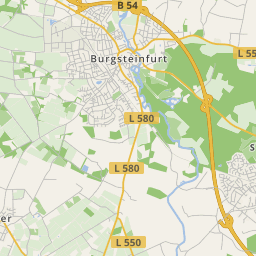











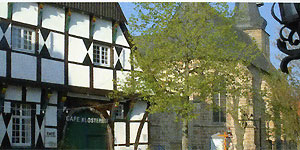
In the year 1964, Dr. Anton Hilckman (1900 to 1970), professor for Comparative Cultural Studies at the University of Mainz, gifted his birth house to the town of Bevergern. The donor stipulated in his will, that the house should be used for the cultivation of local heritage and the historical remembrance.
Since 1966, the Heimatverein (local association) Bevergern has turned its attention to this request and built up a museum in longstanding work, which is dedicated exclusively to local history, culture and the working world.
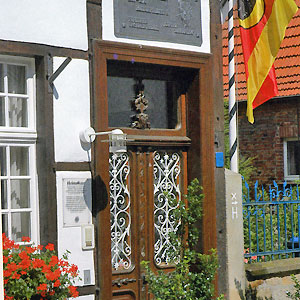
It is a picturesque group of three tightly joined half-timbered houses from the 18th-century. They have maintained its original location between churchyard and rampart of the small town Bevergern. Still today they convey a good sense of living and working of the three important professional groups, which once formed the live in the constricted fortified settlement without an agricultural countryside.
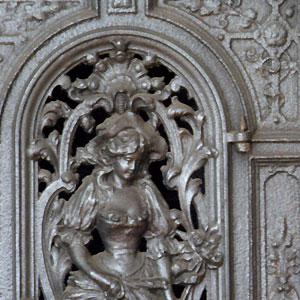
The Merchant House
Coming from the picturesque churchyard one enters the Hilckman’sche residence. Its fireplace carries the year of building, 1742. Originally it had a hallway door at the gable side, which lead to a small barn floor with cattle shed. This part of the house was turned into two rooms in the 19th-century. The walkabout leads first into the Biedermeier room from the 1st half of the 19th-century. As the 'parlour', it contains light veneered furniture and a soft-coloured lounge suite as was typical at that time.
The following room, the Jugendstil room is used as the living room. the wood panelled walls, the red-plush sofa and the cylindrical iron stove in a round recess depict the change in taste of the lower middle class around the middle of the last century. Two delicate wardrobes lead to the the living culture of the 20th-century.
The kitchen has always been the actual heart of the house. It still has the form since the construction in the year 1742. Dominating the room is the hearth fire with its sandstone casing and the big chimney, the 'Bosen'. The devoutness of the inhabitants is depicted on an oval locket with a coloured framed relief picture of Madonna and the baby Jesus. The templet was probably an Italian copperplate engraving from Baroque times. Unusual is the renewed wall painting in the form of grey marble tiles. The painting stands in a charming contrast to the floor, made of crude Bevergern sandstone tiles. A spiral staircase, a masterpiece of small-town carpenter art, leads to the loft with two exhibition rooms, which remember the local tradition. Still today, carnival, named 'Fastaumt' is being celebrated in the old tradition, as described in a document from 1780. Documents, photos and drawings in humorous form point to the special features of the Bevergern carnival. – The age-old tradition of the marksmanship, which still today plays an important part in Bevergern's social life, is being impressively verified by three silver kings' necklaces of the shooting associations. Unusually magnificent is the necklace of the Jakobi-shooter, which is hung with heavy, richly decorated plates, the oldest dated back from 1765. The necklaces of the bachelor shooters from 1835 and the commoners shooters from 1597 are much more modest. Flags, pieces of uniforms, small cannons and crossbows attest the colourful and loud splendour of the shooting festivals.
Back in the kitchen, one steps via a small staircase into the barrel-vaulted cellar filled with milk and butter processing devices for domestic provisioning. Situated above this cellar is the Upkammer, originally the only living room in the house. Middle-class education and prosperity is being manifested by an impressive stucco ceiling from 1742. The frame elements, which are tendrils around them, show a picture programme as was typical of late Baroque times. Five scantily clad girls stand for the 'five senses' of people. One sees (clockwise) a woman with a lute and bellflower as a symbol for hearing, the second with a wine glass and grapes for tasting, another with rose for smelling, a fourth with mirror and sunflower for seeing. In the middle frame, the flower girl is bitten into her leg by a small dog: The meaning is the drastic Westphalian way of feeling.
Some steps lead down into the small

The Craftsman House
,which has a beam in its hallway with the year 1729. It has preserved its original from nearly unchanged and shows in a significantly vivid way the close proximity of humans and animals and the spatial unity of living and working of manual day labourers.
On the left one steps onto a turf, which leads to a low winter kitchen with its iron stove, which leads to the 'cooking machine'.
Next to it one walks over a steep staircase into the small study of Anton Hilckman with personal mementoes of the donor. There are documents from his prison time in the concentration camp Buchenwald and as harrowingly testimony of these hard years his convict jacket and cap.
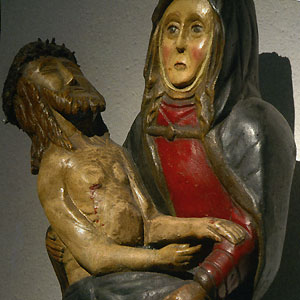
The Ackerbürger (farming citizen) House
has only its outer skin today. Threshing floor, stables and kitchen were removed to create a more spacious hall for the most diverse events.
A few pieces need a mention, like the seven precious gold-embroidered bonnets and caps from the 18th and 19th-century, as they were worn by Bevergern women at festive events. A wooden salt box, big runner chests and an iron-clad suitcase are typical, farming-furniture of the 18th-century. A staircase leads to the loft with an exhibition room about Bevergern's history, from antiquity to the 19th-centuy. The history is depicted in well-signposted chapters.
Archaeological finds, certificates, drawings, photos and models depict the texts vividly. In the centre is a detailed model of the former Bevergern Castle. It was constructed probably around 1100 and went, after a bloody feud to the bishop of Münster in the year 1400. He then expanded it into a powerful stronghold. In the year 1680, Prince-Bishop Ferdinand von Fürstenberg gave the order to blast the castle. The oil painting, by an unknown artist shows his portrait. Archaeological finds remind of the castle's importance: catapult and canon balls, iron shackles, Westerwälder and Siegburger earthenwares, a coat-of-arms on glass of the last castle commandant from 1675, one part of the wooden fresh water pipe.
A narrow hallway with a series of Baroque copper engravings with biblical themes leads into a room for ecclesiastic art from the possession of the Catholic parish church Mariä Heimsuchung. In the centre is a collection of splendid chasubles. Especially valuable is the large choir coat made from blue French silk damask and several white or blue chasubles and dalmatics with rich floral embroidery from the 18th-century. A totally different kind is a red-velvet chasuble from the 19th-century, which is decorated with older depictions of the Passion of Christ in relief-embroidery. They are rare works of the Gothic 'soft style' and originated probably in Cologne in the first half of the 15th-century.
In the three glass cabinets there are devices for the use of the church service are on show. Highlights are the golden communion-cup, which was donated by the families Kerckerinck-Valcke in 1646 and the Gothic communion chalice of the pastor Epping from 1920, made by the Münster goldsmith Wilhelm Bruun. An elegant silver-driven tray with two small cruets was made in the workshop of Maximilian Anton Schmitz in Rheine around 1765, a fine vessel for the consecrated oils, made in the pewtery G. H. Albinger in Münster around 1850. Gold-plated flag tips with Christian symbols, Mother of God's and Christ Child's crown, cosses of the dead and valuable missals show the development of liturgical equipment from the 17th-century to our time.
The veneration of saints in Baroque times, speaks from the oil painting by an unknown Westphalian painter with the Evangelist Lucas and a sandstone figure of the holy Antonius von Padua made by the sculpture Bernd Meyering from Rheine (1631 – 1703). Touching witnesses of century-old popular piety are a life-size wooden figure of the dead Christ in his grave from the 17th-century, the figure of the mourning Madonna, clad in black velvet and numerous Instruments of Passion of Christ from the beginning of the 19th-century. Still today, they are being used during the Bevergerne Passion procession.
Through a door on the south side of the citizens' hall one reaches the town's and Local Museum's archive, which was added to the Heimathaus in 1993. On the ground floor it holds the extensive library of the donor Prof. Dr. Anton Hilckman.